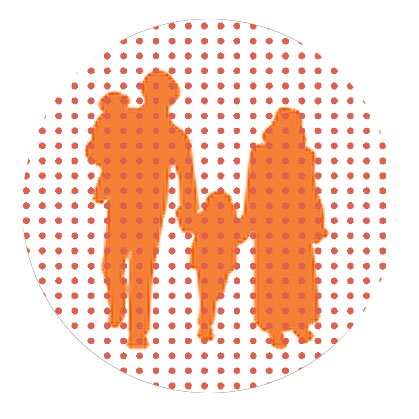The Aggressive Child

Parents must stop aggressive behavior

“D
ovy kicks me when he’s displeased. He’s pushed the nanny a number of times when she’s given him an instruction he didn’t like. And when any of the other kids annoy him, he chases them around with a kitchen knife. We’re all kind of afraid of him,” says a mother.
Kind of? How old is this family bully? If he’s only a toddler, let’s grab that knife out of his hands and move on. But if he’s eight — or worse, 11 — then we’ve got a serious problem on our hands.
Aggressive kids, especially big ones, can accidentally (and sometimes intentionally) cause serious harm. When wielding “weapons” like knives, scissors, broomsticks, plastic toys, or any other object, they cannot only menace and distress siblings, but they can scar them mentally and physically. It’s the responsibility of parents to ensure that each child feels safe in his or her own home.
“He doesn’t listen and he’s not scared of me or my husband. He does what he wants. I can’t stop him. I tell the other kids to just run away from him if he bothers them.”
Telling the other kids to fend for themselves is an inexcusable form of abandonment. While it may be a good first step in a threatening encounter, it must be backed up by parental action. Adults have to step in to manage the situation and to prevent it from recurring. If they don’t know how to do that, they’re obligated to seek help in order to learn.
Now it does often happen that parents are more scared of their child than the child is of them. It can occur whether the child is two years old or 15. We see it sometimes where the parents are very reasonable and logical people and simply don’t know how to appeal to their illogical, irrational, impulsive, and badly behaved youngster.
But it can also happen to any parent when the child’s loud and violent behavior is simply overwhelming; even grownups feel threatened by aggression. When this happens, parents can use their own discomfort as the signal to compel action. Even if the children in the family fail to make a formal complaint against their sibling, their future therapists will hear all about the terrifying experience of living with a raging brother or sister. To prevent this scenario from unfolding, parents can start with home strategies, and if this proves insufficient to put a complete end to aggressive behavior, then follow up with professional intervention until the problem is fully solved.
Rewire the Circuit
The first step is for parents to rewire the behavioral circuitry of their child’s brain. Aggressive kids quickly learn and practice harmful behavioral routines like screaming, hitting, shoving, and threatening. The more they do this, the better they get at doing it. When parents fail to interrupt and reprogram the routines, the routine reactions become stronger over time. The moment a teacher, sibling, or hired helper reports aggression, it’s time for the parent to develop a corrective program.
Aggression can occur out of simple boredom, but it more often occurs as a reaction to perceived insult, rejection, or mistreatment. In all cases, the aggressive child feels threatened and attempts to cope using empowering but dysfunctional strategies. Mom and Dad need to teach an alternative set of responses to the triggered feelings. “When you’re displeased, you can say so while keeping your hands to yourself. Let me show you how.” Parents will then demonstrate the appropriate response to deep frustration, insult, or other painful emotional experiences, giving the child the exact words to speak and the exact body language to emulate. This will be followed by having the child copy their model through role-playing or simply mimicking their own performance of the correct behavior. The act of practicing ensures that the new behavior will be wired into the child’s brain, ready for use in real time. Parents can require daily practice sessions until the appropriate behavior becomes the spontaneous reaction to provocation. In addition, serious negative consequences should be employed for every act of aggression.
If after a number of weeks of this home treatment there isn’t a significant reduction in aggressive behavior, it’s time to bring in professional help. Parents need to know that they can — and must — put an end to aggressive behavior in their home. Their zero-tolerance policy for it will ensure success.
(Originally featured in Family First, Issue 876)
Oops! We could not locate your form.


